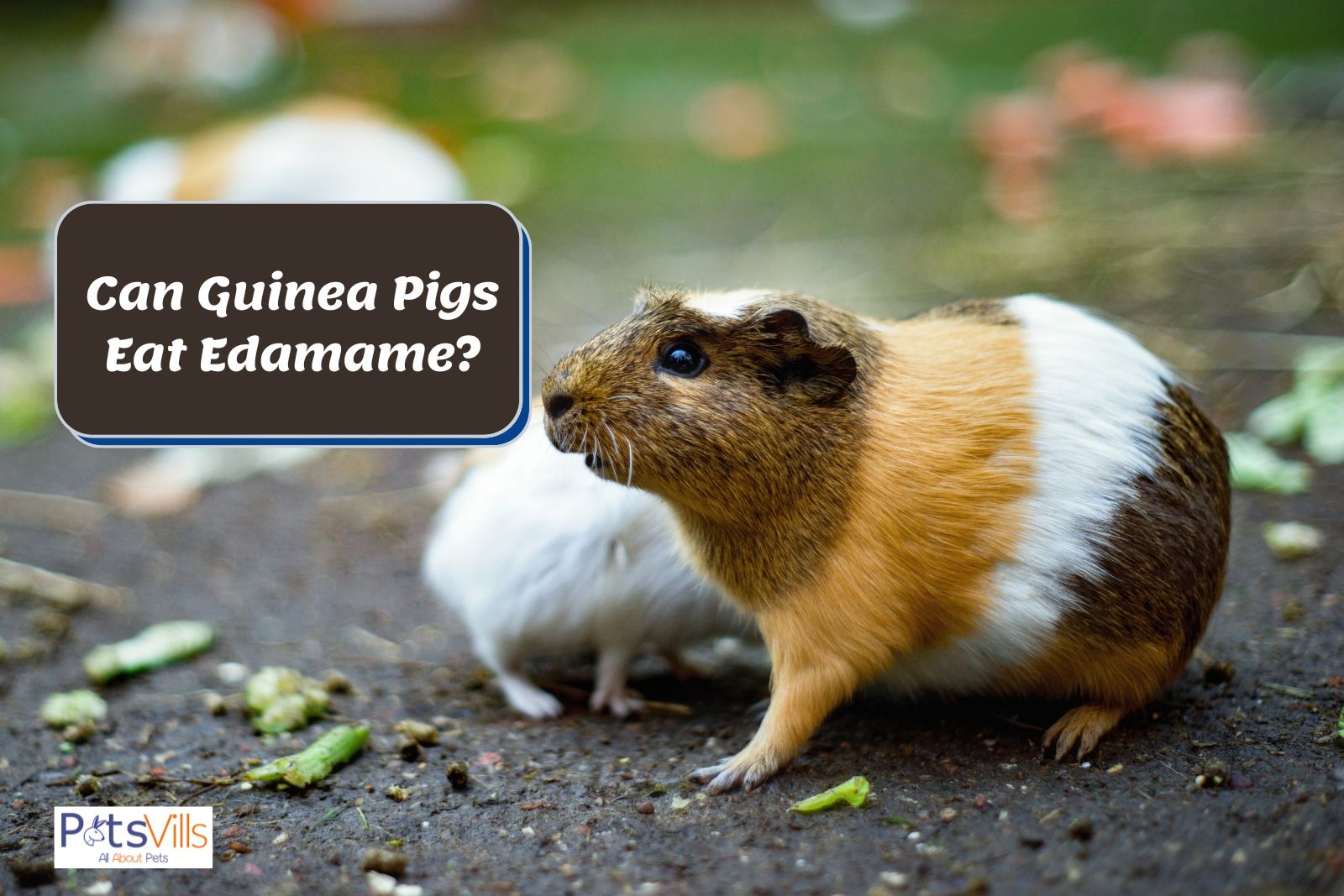If you enjoy eating edamame, you may have a bag of frozen edamame in the freezer. Since they are safe and nutritious for humans, you may wonder if guinea pigs can eat them too.
Can guinea pigs eat edamame? Yes, guinea pigs can eat edamame when it’s cooked. If so, edamame is a great treat for them as it’s packed with fiber, protein, and vitamin C.
But there’s more to learn about edamame before feeding it to cavies.
So read on, and you’ll learn whether it’s the right treat for your cavy.
Table of Contents
Key Takeaways
- Edamame is a safe food for cavies, but only when cooked. Uncooked or raw edamame contains high amounts of a dangerous toxin that could hurt a cavy.
- Several health benefits come from providing cavies with edamame, including being high in protein, fiber content, and vitamin C.
- Moderation is vital when getting cavies edamame, so consider it a monthly or bi-monthly treat.
Is It Safe For Guinea Pigs To Eat Edamame?
Edamame is a perfectly safe food for guinea pigs, but there are caveats. For instance, uncooked edamame has “high amounts of glycoprotein lectin” (1), a dangerous toxin for cavies.
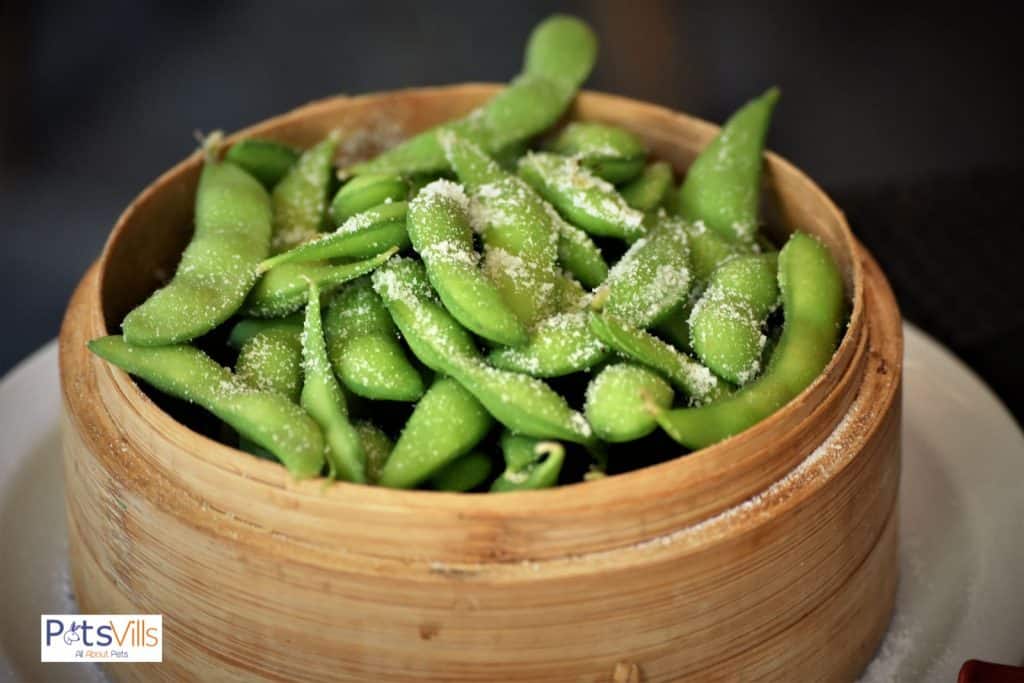
As a result, it can cause nausea, vomiting, and diarrhea within 2 hours after the guinea pigs eat them. So you’ll need to cook the beans thoroughly to prevent issues.
It’ll only require placing them in boiling water for about 5 minutes. Then, once the beans turn bright green, they’re safe for consumption.
You’ll also notice the beans become soft after cooking. It’s a positive development because it makes them easier to chew and digest.
Lastly, please let the beans cool down to room temperature before feeding. You don’t want to burn your guinea pig’s mouth or cause them discomfort.
Can Guinea Pigs Eat the Edamame’s Shell?
Guinea pigs can eat edamame shells, but I wouldn’t recommend giving them to your cavy. Sadly, these shells are a bit tough for cavies to eat.
As a result, it could cause them to choke on it. This issue also even presents itself when you cook the shells.
Therefore, it’s better to throw away the edamame shell and let them eat the beans inside.
Can Guinea Pigs Eat Cooked Edamame?
As mentioned earlier, cooked edamame is a perfect treat for cavies. It should be the only way a person should provide their cavy with this healthy food.
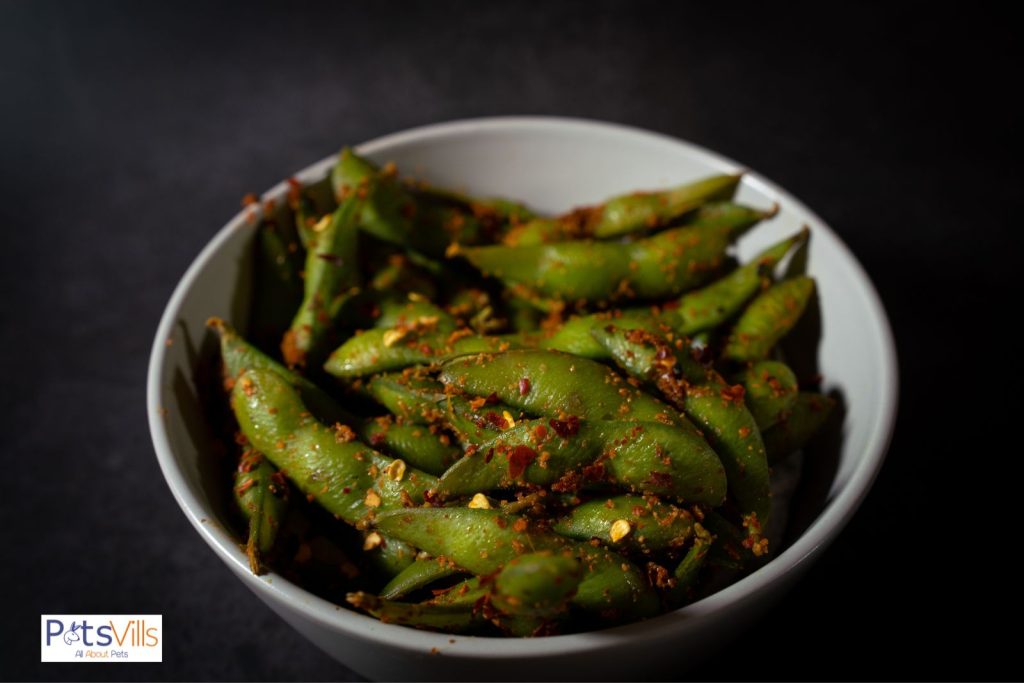
Otherwise, you’re running the risk of exposing them to a dangerous toxin. It’s not a situation any guinea pig owner would want for their little furballs.
So always cook edamame in boiling for five minutes before serving it. From there, you can rest easy knowing that it’ll only provide your cavy with nutritional benefits.
Health Benefits of Edamame For Guinea Pigs
Feeding edamame to guinea pigs wouldn’t be a bright idea if it didn’t offer health benefits. But thankfully, some do come from eating edamame:
1. High in Protein
Edamame is about 12% protein, which is good for plant food (2). It’s the main reason this bean has become one of my favorite guinea pig treats.
Guinea pigs can use this source of protein to ensure their primary bodily function operates. For example, muscles need protein for repair and development.
At the same time, it’ll help shape organs and tissues, allowing them to work correctly.
All of this is crucial for guinea pigs. After all, they require a good source of protein each day to grow and stay healthy.
2. High In Fiber Content
Edamame is a good source of fiber, which helps promote a healthy digestive system. In fact, it has done wonders for my guinea when he has digestive issues.
It comes from fiber being helpful in regulating bowel movements. Therefore, regular fiber intake will help the food guinea pigs eat move smoothly throughout their digestive tract.
3. High in Vitamin C
Another area where edamame excels is with its substantial vitamin C quantity. Cavies can benefit significantly from it because they can’t make vitamin C in their body (3).
Instead, they will need to obtain it from an outside source. So edamame represents a healthy way to provide it.
You then expect vitamin C to boost a cavy’s immune system. From there, it helps prevent them from becoming sick.
It’ll also help when they get sick. Giving them plenty of vitamin C-rich foods like edamame will help them recover quicker.
How To Feed Edamame To Guinea Pigs?
As I’ve mentioned, cooking edamame is the first step to feeding it to cavies. So only consider using it if it’s cooked correctly.
In most cases, edamame is cooked with salt and other ingredients to add flavor to them. Salt in a small amount is acceptable for cavies, but too much can cause health problems.
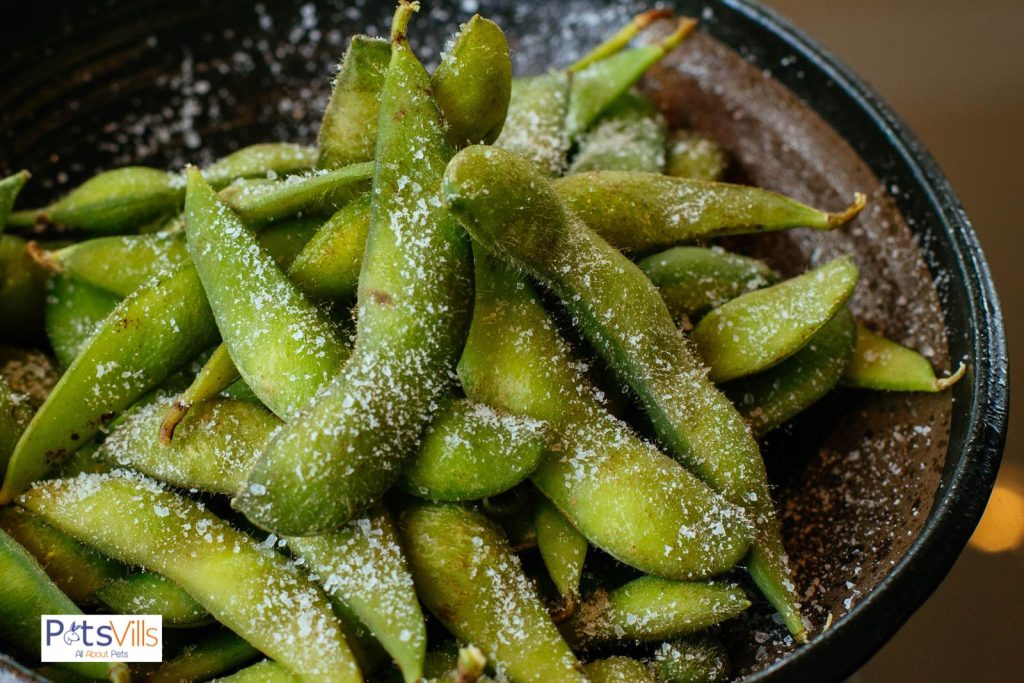
If you buy frozen edamame, it’ll usually have salt added already. So you’ll want to avoid using it as these beans have a high salt content.
Therefore, use edamame with no salt and cook it in boiling water for five minutes. It’ll then be ready to cavy consumption.
From there, open the shell and provide your cavy with the bean inside. But it’s worth noting some cavies like mine will be picky about eating them.
So another option is to mix the edamame beans with hay and pellets. It is a great way to give them an extra boost of nutrition.
How Many Edamame To Feed Guinea Pigs?
Moderation is vital when giving your cavies edamame. In other words, it’s a treat to guinea pigs rather than a dietary staple.
Providing them with edamame once or twice a month is a good guideline. Give them a whole edamame pod during these feedings, as it’ll contain 3 or 4.
It’ll be enough to offer them all the benefits of edamame pods.
Other Vegetables That Guinea Pigs Can Eat
Of course, edamame isn’t the only vegetable a cavy can eat. So let’s look at a few other veggies that could spice up their lives:
1. Green Beans
Green beans make an excellent snack for guinea pigs. They are low in calories and rich in vitamin C, fiber, and other nutrients.
Due to their high amount of phosphorus and calcium, only feed them in moderation. So I’d suggest giving them one green bean at each feeding and a couple of times per week.
2. Broccoli
Guinea pigs eat broccoli, which is one of the vegetables that should comprise the bulk of your cavy’s fresh produce. They are packed with nutrition, especially vitamin C.
Since it has a low calcium content, you can feed broccoli to them daily. It has long been a staple of my cavy’s regular diet.
3. Green Pepper
Never underestimate the value of green peppers for a cavy’s diet. It’s a vital inclusion in a regular guinea pig food diet, with low sugar content and calories but high in vitamin C.
Plus, they require very little preparation. You can feed them the pepper along with the seeds.
READ MORE: What Can Guinea Pigs Eat Daily?
FAQs
Can guinea pigs eat soybean?
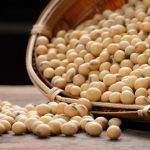
Yes, guinea pigs can eat soybean. But only in moderation due to their high content of calcium and protein. Feeding them too much of it can cause digestive issues.
What beans can guinea pigs eat?
Guinea pigs can eat a wide assortment of beans, including edamame beans, green beans, pinto beans, black beans, and kidney beans.
Conclusion
So can guinea pigs eat edamame? If it’s cooked edamame, the answer is a resounding yes. It’ll be an excellent treat for guinea pigs with its high nutritional value.
But pet owners will need to refrain from using it too much. A whole edamame bean once or twice a month is a perfect amount to avoid any issues.
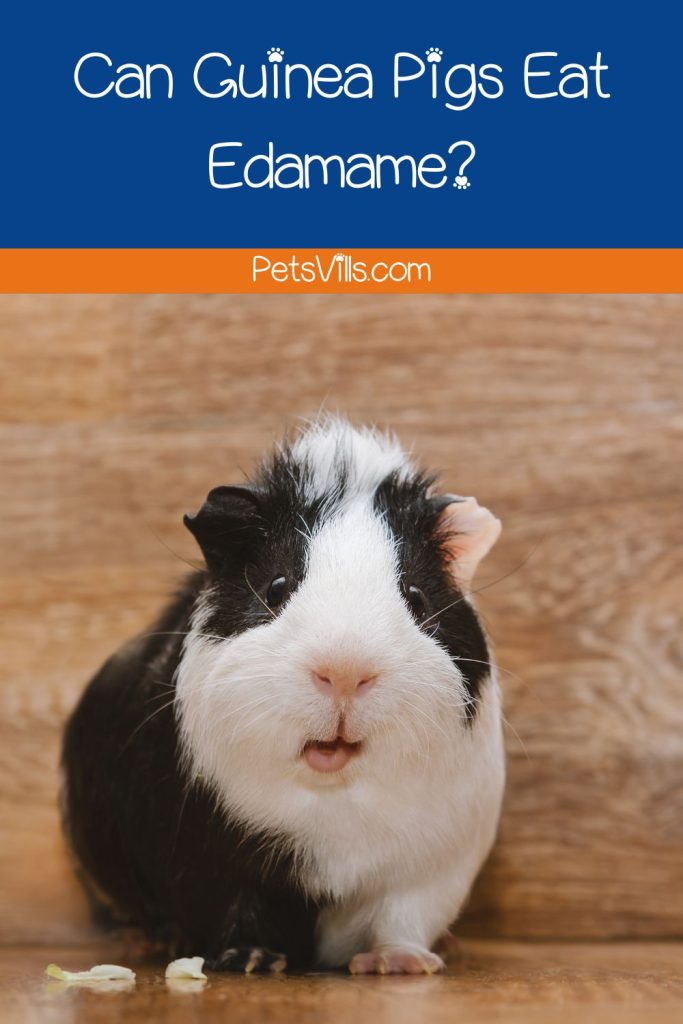
So, did you ever feed edamame to your guinea pig? Let us know in the comments section!
Resources
- Styles S. Vegetables You Shouldn’t Eat Raw [Internet]. Healthy Eating | SF Gate. 2018. Available from: https://healthyeating.sfgate.com/vegetables-shouldnt-eat-raw-11414.html
- FoodData Central [Internet]. fdc.nal.usda.gov. Available from: https://fdc.nal.usda.gov/fdc-app.html#/food-details/168411/nutrients
- Čapo I, Hinić N, Lalošević D, Vučković N, Stilinović N, Marković J, et al. Vitamin C Depletion in Prenatal Guinea Pigs as a Model of Lissencephaly Type II. Veterinary Pathology [Internet]. 2015 [cited 2022 Dec 5];52:1263–71. Available from: https://pubmed.ncbi.nlm.nih.gov/25487414/

Andreea is a very passionate content creator and her purpose is to provide you with the most interesting articles, while constantly discovering new facts. She’s been freelance writing for the past five years and has created numerous articles and educational materials while managing her own mom blog.
Read her Latest Articles
Find her on
FACEBOOK AND Instagram

